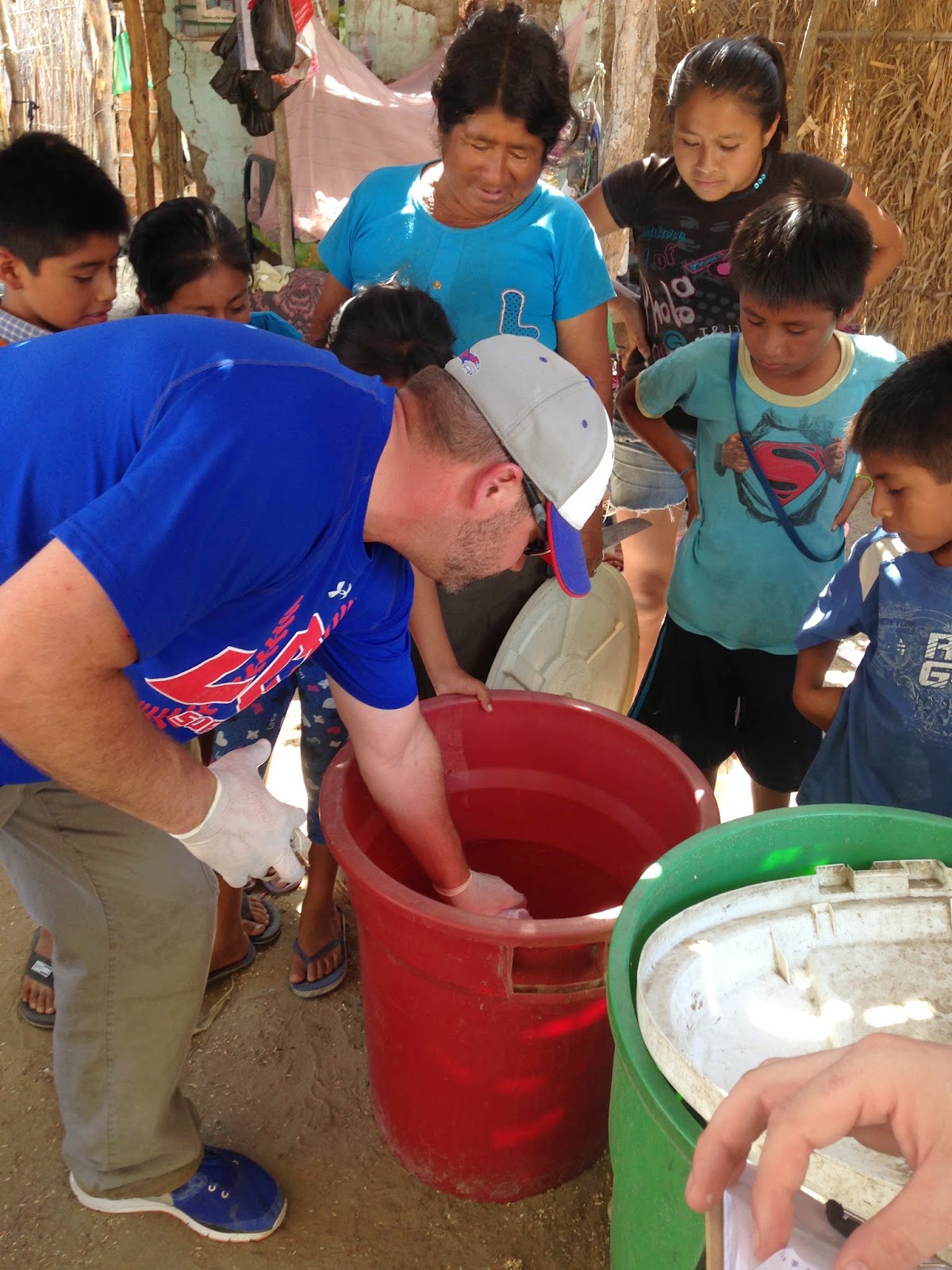.....of one of the most pressing needs in the world today--the need for safe, clean drinking water. The pictures are courtesy of Andy Laughlin from the Lubbock Christian University and nineteen of his students who made the trip to Peru with us last week. During the week they visited several locations, including private homes, and took photos of the local water supply.
Although Loma Negra is in a semi-arid desert location, there has been built a fairly sophisticated irrigation canal system and the area is actually pretty productive in corn, rice and other crops. The irrigation water, however, usually serves as the source of local drinking water.
Here is a slide of G-bacteria and E.coli test samples. Admittedly, I'm not familiar with water sampling or the things they're looking for but these slides are pretty revealing. The two samples on the far left are of our bottled water we took with us (which is bottled somewhere from a Peruvian water source) and you can see there are no cultures growing. The other cultures, from various sources, began showing bacteria growth within minutes after being taken.
Although Loma Negra is in a semi-arid desert location, there has been built a fairly sophisticated irrigation canal system and the area is actually pretty productive in corn, rice and other crops. The irrigation water, however, usually serves as the source of local drinking water.
Here is a slide of G-bacteria and E.coli test samples. Admittedly, I'm not familiar with water sampling or the things they're looking for but these slides are pretty revealing. The two samples on the far left are of our bottled water we took with us (which is bottled somewhere from a Peruvian water source) and you can see there are no cultures growing. The other cultures, from various sources, began showing bacteria growth within minutes after being taken.
(All photos by Andy Laughlin and Lubbock Christian University students)
Here, one of the students is taking a sample of water discharged from the canal system onto crop land. Somebody, I don't know who, came into this location and constructed a professional and sophisticated concrete canal system with pump stations. I'm not sure of the origin of the water source, but it ends up in Loma Negra in various croplands. This water also, unfortunately, serves as home drinking water for many residents.
Here, a resident is transporting canal water to her home. Motorized vehicles in Loma Negra consist mainly of motorcycle taxis and an occasional tractor. Most residents, however, rely on the centuries-old method of donkey power.
Here is a photo of Andy taking a home water sample. Notice he is wearing latex gloves.
Here he is taking another sample. As you can see, the collection process drew quite a crowd.
Here is a photo of drinking water stored in a home. Necessity is the mother of invention and the residents do whatever they have to do.
The rate of alcoholism is very high here--in large part due to a home-made drink called chicha. Here a woman pours some into a smaller container. There are various forms of chicha and I understand in the cities some restaurants serve it but here it is basically a fermented corn-beer. It has a very "grainy" texture and I was told that drinking it is similar to White Lightening mixed with sand. It's obviously cheap and easy to make and is largely responsible for the high rate of alcoholism here.
In my travels around Asia, South America and especially Africa, I've become convinced that safe, clean drinking water is probably more important than increasing food production in these poor areas. I once read about a guy who quit his oilfield job and has developed a cheap, effective drilling method for water wells in villages in Africa. I wish I could find the name of his company. But I think these photos from Loma Negra do a good job of illustrating that need.







No comments:
Post a Comment